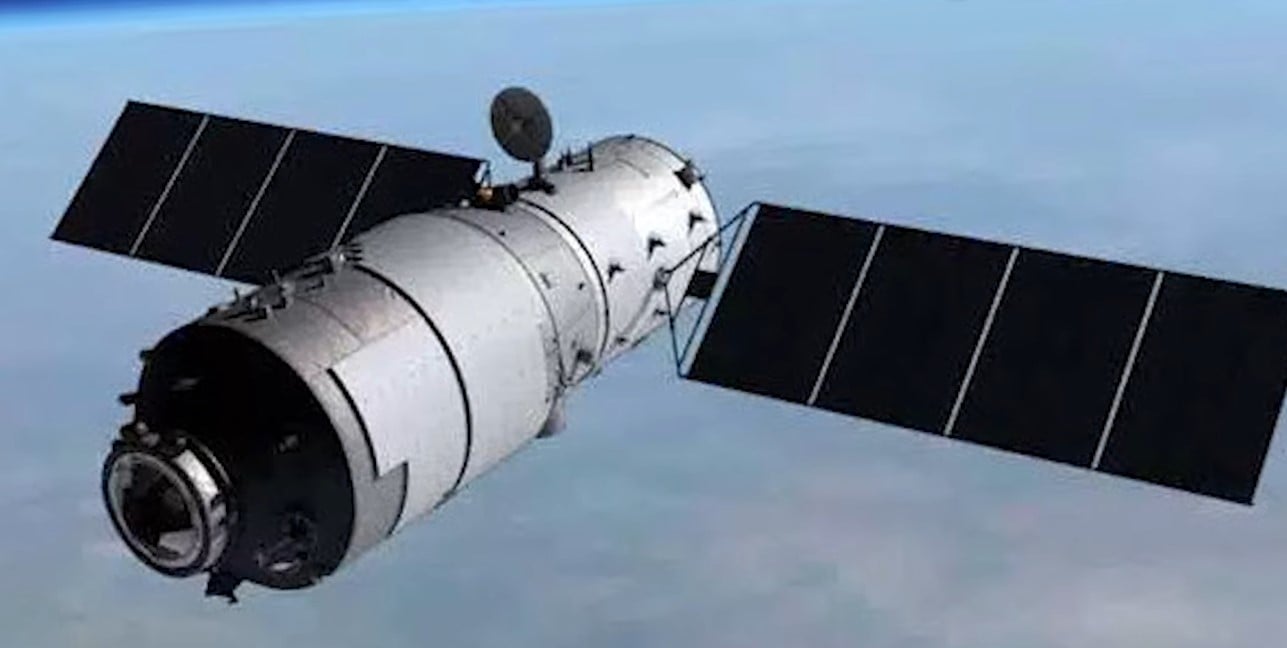It had been suspected for quite some time, but China finally admitted a few months ago that they had lost control of the Tiangong-1 Chinese satellite. The government has stated that it’s looking like March may be the month that the satellite crashes down to Earth.
The European Space Agency has been tracking the Tiangong-1 Chinese satellite, and they expect that we may see it tumble into Earth at some point between March 24th and April 19th. That’s a decent sized gap, but considering the huge distances we’re dealing with and the varying speeds of spacecraft, it may be difficult to give a more concrete idea of when we’ll see this Chinese satellite crash into Earth until we get closer to the expected date range.
Scientists are under the impression that Tiangong-1 will enter the atmosphere somewhere between 43 degrees north and 43 degrees south latitude, which is admittedly a pretty imprecise estimate. They have since stated that it’s likely that it will crash somewhere further north, however, which means the United States, Spain, Portugal, Greece, China, the Middle East and a number of other countries may all be at risk when this Chinese satellite comes tumbling back into our atmosphere.
The name Tiangong-1 means “Heavenly Palace,” although it will soon be crashing out of the heavens on a rough entry into the earth. Thankfully, it appears as if the Chinese space station will be nearly fully-incinerated by the time it lands which means that we should see very little – if any – damage from the eventual impact. It’s important to note, however, that some of the material on the space station is toxic, including the chemicals used in rocket fuel. So if you happen to come across any of the debris, make sure you stay clear of the crash site for your own safety.
Officials have warned that if the Chinese space station were to make its impact on the ground, there’s still a chance that it could cause some damage from the few solid pieces that remain. Keep in mind, however, that space debris experts have put the chances of being struck by space debris at around a million times less likely than winning the lottery, so it’s likely that you don’t have anything to worry about even if you live in one of the areas that is likely to be impacted. We’ll have to wait and see whether the impact from Tiangong-1 falls in a populated area, but if it does it’s far more likely that there will be at least a couple of injuries from the space station’s descent.
The European Space Agency and other such agencies are going to be keeping a close eye on the descent of the space station and should hopefully be able to tell us with better certainty where and when exactly we can expect the impact. Until that point, however, we’ll just have to wait and see.
While space agencies always launch their satellites and rockets with the best intentions. It’s not always easy to keep everything under control – especially when you keep equipment in service longer than was intended. Space travel is already exorbitantly expensive, and having situations like this Chinese satellite crashing back down to Earth only wastes resources that could have been used to further our understanding of space. Hopefully, moving forward, we can take steps to exact greater control over our spacecraft and ensure that situations like this don’t happen again. While the satellite should burn up almost completely before it impacts Earth, there’s still a possibility that damage could be caused due to the Chinese government’s mistakes.
Unfortunately, we have yet to have a solid control over the world of outer space. Once we launch a satellite or other spacecraft we do have some control over its path and performance, but there are mistakes that are bound to happen like we saw with this instance of the Tiangong-1. Luckily, we should have a better sense of where things will impact in the next few weeks as this Chinese satellite gets closer and closer to re-entering our atmosphere.





